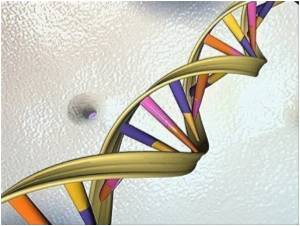A new method of examining cancerous tumors suggests that tumors may not evolve gradually, but rather in a punctuated or staccato-like bursts.

The new analytic method, devised by Cold Spring Harbor Laboratory (CSHL) Professor Michael Wigler and colleagues, features a process called single cell sequencing (SNS), which enables accurate quantification of genomic copy number within a single cell nucleus.
Genomic copy number refers to the amount of DNA in the nucleus. In cancer, portions of the genome are amplified or deleted, giving rise to extra or missing copies of key genes and interfering with mechanisms that normally control cell growth.
"We demonstrated that we can obtain accurate and high-resolution copy number profiles by sequencing a single cell from a cancerous tumor and that by examining multiple cells from the same cancer, we can make inferences about how the cancer evolved and spread," said Wigler.
The CSHL team used two sampled tumors. Both were primary invasive breast cancer tumors of the so-called "triple-negative" type, generally regarded as the most aggressive form of breast cancer.
One tumor sample was known from prior testing to be polygenomic: composed of distinct populations of tumor cells, whose number, genomic type and evolutionary history were not readily measurable using conventional techniques.
Advertisement
Using SNS, in concert with whole-genome amplification and next-generation sequencing, the CHSL team was able to show that in fact three distinct subpopulations of tumor cells were present.
Advertisement
The second breast cancer sample analyzed by the team was of a single genomic type, but the team was able to determine that the liver metastasis to which it had given rise was very closely related, in genomic terms.
The study has been published in the journal Nature.
Source-ANI










